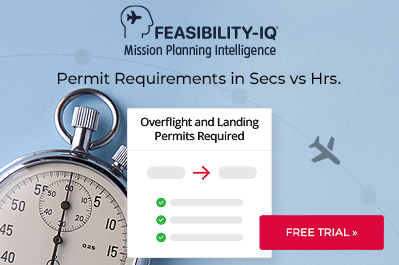Permit Requirements for Business Aviation: Part 1 – Changing Requirements Around the World

This business aviation blog post is part of a series on changes surrounding charter permit requirements.
For business aircraft operators, permit and documentation requirements continue to change and tighten around the world. While these changing requirements generally apply more to charter (non-scheduled commercial) than to private non-revenue operations, it’s important to be aware of evolving permit mandates, as well as idiosyncratic permit requirements, as they apply to all types of operations.
The following is an overview of what you need to know:
1. Most permit changes impact charter operations
Most permit requirement changes we’ve seen recently have had the most significant impact on charter. In many parts of the world permit lead times are longer, and documentation requirements more stringent, for charter operations. In many cases, charter operators require permits while private non-revenue operations may not. For example, for travel to the UK, landing permits are not required for private, but they are for charter flights. And, due to recent regulatory changes, short notice charter permits are no longer possible for the UK.
2. Mexico changes
As of June 1, 2014, major permit changes went into effect for Mexico, and these were mostly positive. Previously, no domestic movements were permitted by foreign registered charter aircraft in Mexico. With recent rule changes, charter operators are now permitted to conduct domestic operations within Mexico so long as the same passengers remain on board. It’s also now allowable to fly a charter to Mexico to pick up passengers that did not fly into the country with the same charter operator. It’s always important, however, to be open with authorities in terms of your flight information and schedule.
3. UK permit changes
As of a few months ago responsibility for issuing charter permits moved from the Department for Transport (DFT) to the UK Civil Aviation Authority (CAA). The key change here is that it’s no longer possible to secure after hours permit approvals. Permits are now only processed Monday – Friday during normal business hours, and at least 48 hours lead time is recommended. While the former practice of local UK charter providers objecting to foreign registered charter requests has largely now gone away, such “objections” may still occur in rare cases.
4. Security questionnaire requirements
Completion of security questionnaires, prior to permits being issued, has become a more common requirement around the world. For instance:
- Germany has had a security questionnaire mandate in place now for some time.
- Italy has a similar program although, it is not as in-depth as Germany.
- Australia has also implemented such requirements.
Plan on additional lead times in complying with these regulations. The process to complete a security questionnaire, and apply for an annual charter permit, can take up to two weeks for Italy and two to eight weeks for Germany.
5. Longer permit lead times are needed in some cases
Landing permits can normally be obtained for most parts of the world in about three business days. Charter permits for Germany and Russia, for example, usually require three to five business days lead time. Russia, however, has relaxed lead times somewhat, and permits are now often obtainable in approximately 48 working hours. In contrast, permits for Myanmar require 14 business days lead time (about three calendar weeks).
6. Military bases continue to present unique permit requirements and lead times
In most parts of the world – including India, Japan and the UK – you’ll need to plan on at least 30 business days lead time for military airport landing permits. Be prepared to provide unique information when operating to these locations. In the case of India, for example, all passengers/crew need to provide their places of birth and home addresses as well as their father’s full name. Just recently, India relaxed permit lead times from 30 to 15 days for operations into military airfields such as Agra (VIAG).
Conclusion
Charter operators face longer permit lead times and additional documentation mandates at many locations worldwide. It’s best to work with your trip support provider and local ground handlers, well in advance of day of operation to confirm, and plan for, all applicable permit requirements.
Questions?
If you have any questions about this article or need assistance coordinating your next charter trip, contact me at markhudson@univ-wea.com.
Stay tuned for Part 2, which covers more permit considerations.




